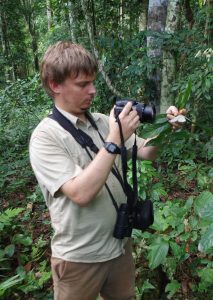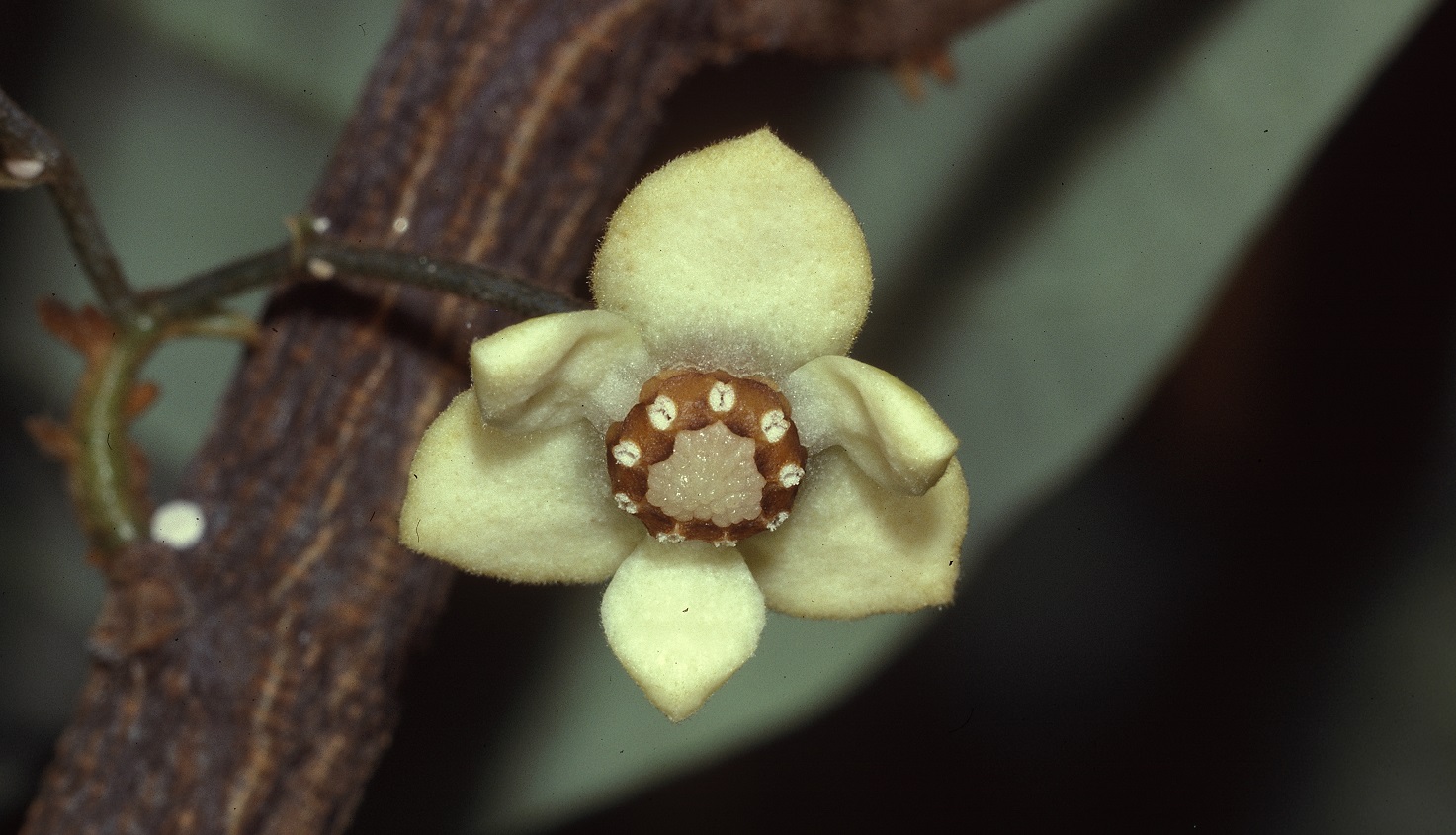No, he is not into Tarzan. There have been plenty of jokes about that while he was doing his PhD research. The lianas that Paul Hoekstra researched for five years just grew from the ground up. ‘Most lianas can’t be used for swinging from.’
He used the soursop plant family (Annonaceae) to do genetic research into the evolution of biodiversity in the tropics. ‘Actually, I focused on Monanthotaxis, a genus within the soursop family that only occurs in Africa. The Herbarium in Wageningen already had many specimens of that genus, mainly from Gabon. It is a beautiful, large and diverse group to do biodiversity research on.’
Hoekstra began his study in 2012, when the WUR Herbarium was still located at De Dreijen in Wageningen. A year later, it was moved to Naturalis natural history museum in Leiden. So he spent the next three years there, working fulltime on what may be called a life’s work: an updated review of the genus Monanthotaxis. A complete description of 79 species of this genus takes up no less than 238 pages in his thesis Disentangling Lianas. There’s a small omission though: he didn’t get around to the 12 known species that occur in Madagascar.

Family tree
‘Disentangling lianas’ is a reference to the mess the group was in. ‘When I started, more than half of the plants collected had not yet been identified. Often it wasn’t even certain that they belonged to that genus.’ Hoekstra not only catalogued the group in an orderly fashion, but also discovered 23 new species. These were plants that had been collected, but had never been studied or identified. No, he has not named any of them after himself. It is an unwritten rule in biology that you do not name species after yourself. ‘But I did name one after my son Arend, the Monanthotaxis aquila. Aquila and Arend both mean eagle’.
The study has a firm foundation in genetic research. Based on the evolution of characteristic pieces of DNA, Hoekstra made a phylogenetic tree, a family tree in other words, of the genus Monanthotaxis. He linked this family tree to the external characteristics of the flowers of the plants. This yielded a remarkable conclusion: the more recent the species, the smaller the flowers. Why that should be is a matter of speculation for now. Hoekstra: ‘It may have something to do with the method of pollination. In many groups of plants you see that plants adapt themselves to the size of the pollinator’.
I named one after my son Arend, the Monanthotaxis aquila. Aquila and Arend both mean eagle.
The documentation of Monanthotaxis not only provides fundamental knowledge, but also has practical value. Some species are known to provide protection against malaria and cancer. Those species have now been well described, are identifiable, and have a name. Hoekstra: ‘And thanks to this phylogeny, you can now search much more specifically for species that may also contain substances with medicinal properties.’

 Monanthotaxis whytei. Photo Lubbert Y.T. Westra
Monanthotaxis whytei. Photo Lubbert Y.T. Westra 

